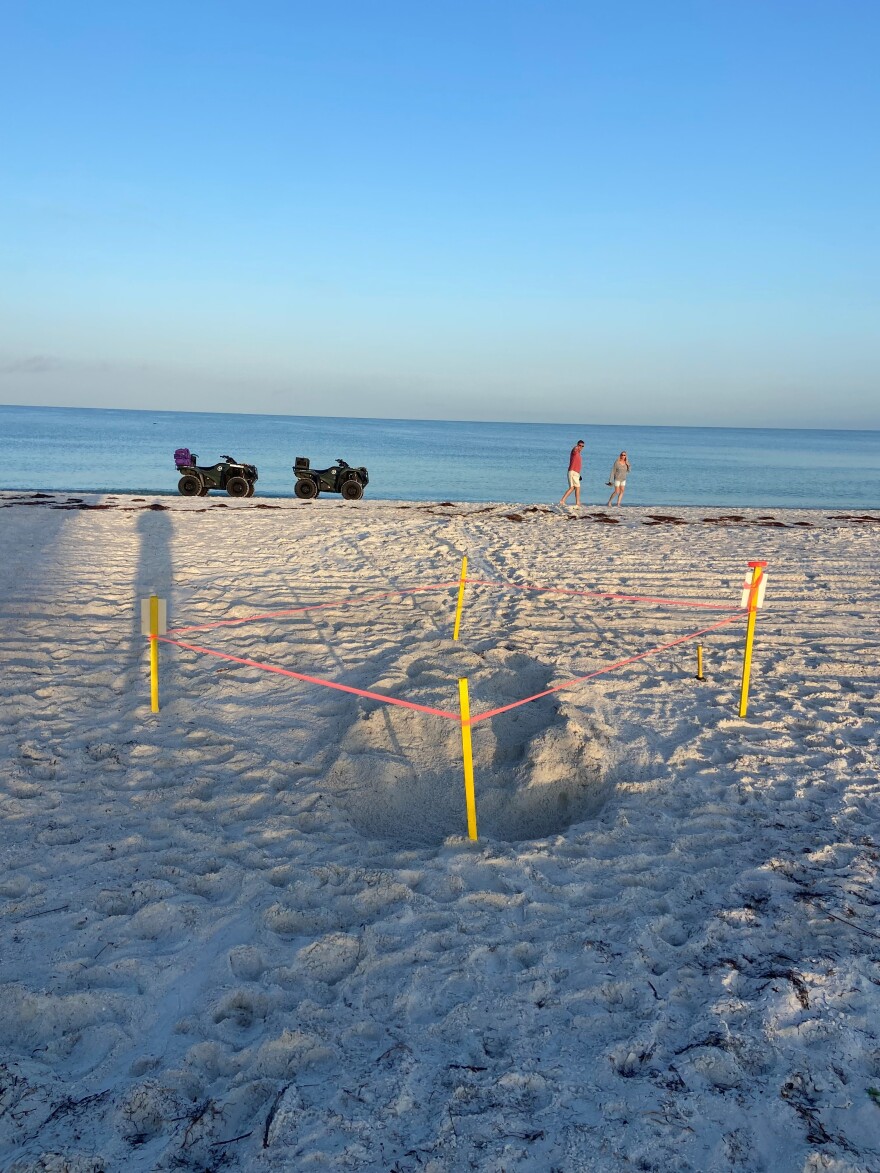While Hurricane Idalia took a toll on turtle nesting season in Pinellas County in late August, an expert says it helped that when the storm came, many of the nests already were hatched.
Clearwater Marine Aquarium usually counts about 300 sea turtle nests each season along a 21-mile stretch of beaches in northern Pinellas.
This season, which ended in October, a total of 227 nests were counted, said Carly Oakley, a senior biologist in the Sea Turtle Conservation Program at the aquarium.
When Idalia came through, Oakley said the damage to nests could have been much worse had the storm struck earlier.
"It was towards the end of our nesting season. So, we only had 75 nests left on our beaches when the hurricane came through, and then afterwards … we were able to actually reestablish 14 of those nests," she said.

“Reestablish” means scientists use GPS locations to re-mark the remaining clutches or nests.
Although Idalia washed away 61 nests, she said sea turtles are resilient by each laying more than one nest per season. Female sea turtles will lay three-to-seven clutches a season with 80-to-120 eggs in each. They will take a couple years off in between to regain the energy that they went into creating all those eggs.
"So that's just the type of species that they are: they actually produce more offspring for the occasions of hurricanes and other national natural disasters coming through," she said.
Along Pinellas, it’s primarily loggerhead turtles that are nesting, although on rare occasions, green sea turtles and Kemp's ridley sea turtles lay eggs there. Loggerheads are known to nest in only two locations: Florida and Oman, which is in the south eastern corner of the Arabian Peninsula.
Clearwater Marine Aquarium was able to help 12,000 hatchlings make it to sea this year.
The main concern biologists worry about regarding storms and turtle nests is beach loss, Oakley said. Pinellas did lose some elevation and dune line on its beaches.
“When those tidal waters come up, and we have king tides on top of it, it does flood our beaches," she said. "So, when it does flood, it sucks out all the sand and it can take the clutches with them as well, which is why we weren't able to reestablish all 75 of those nests.”
She said they won't know the full effect of the season until next nesting season.
Oakley said everyone should care about the wellbeing of sea turtles, as they are an important species within the food web. They also are threatened and endangered.
Humans can help during nesting season, she said, "by keeping the beaches dark, making sure that they are clean, making sure that they're flat allows the turtles to have an easy access to and from the beach.”
The same applies with hatchlings, she said. They need to be able to orient out to sea.
Overall, Oakley said they felt “very lucky” this nesting season.
“We've had seasons before [where] we've been hit by multiple tropical storms. So, this season, yes, we did lose a lot of nests, but we did it did come through at the right time for us,” she said.




